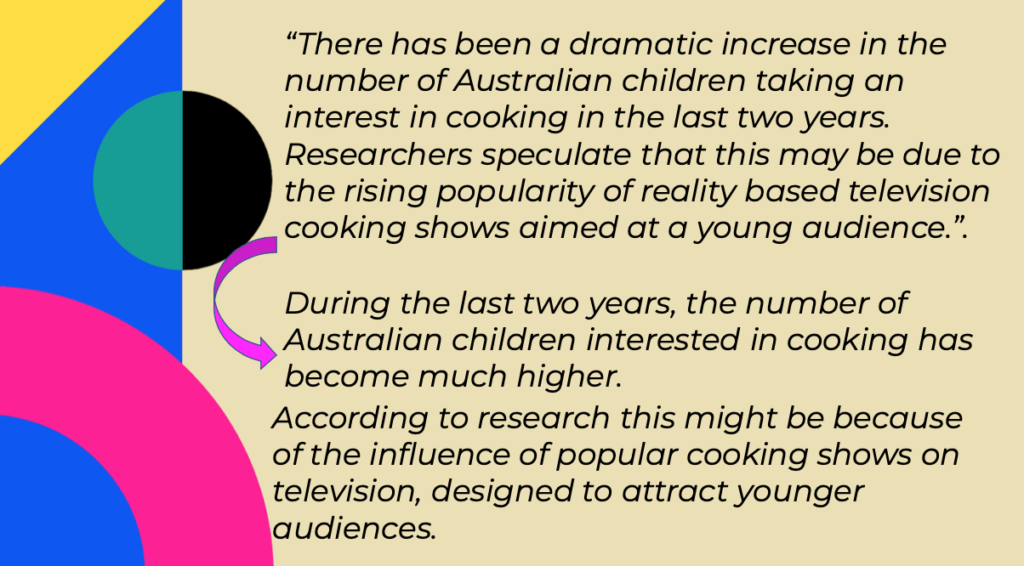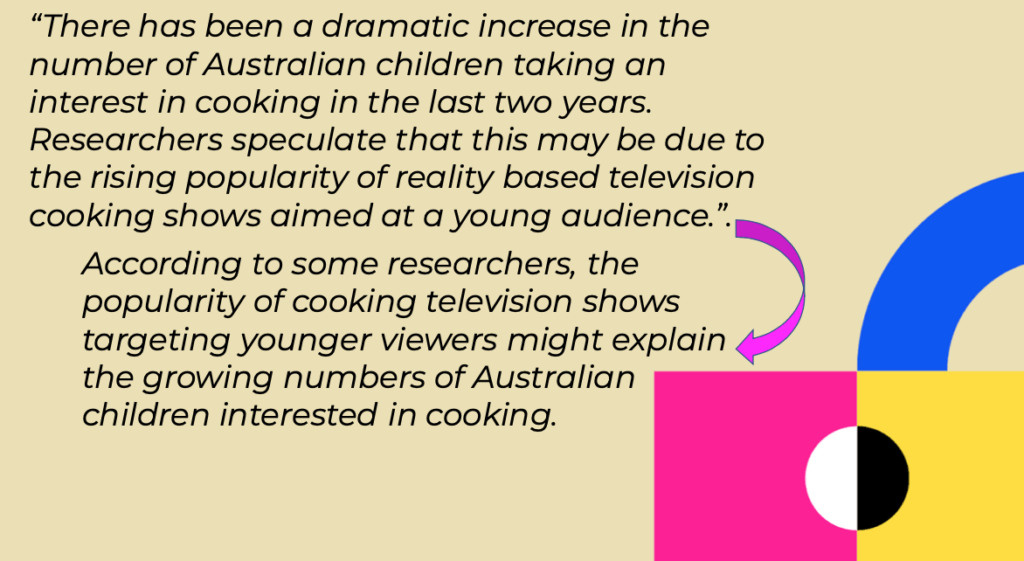Plagiarism
Estimated Time: 20 minutes
At the end of the lesson, you will understand how to give credit to the sources of information from your research. You will also learn why plagiarism is unacceptable in academic writing.
How Do I Give Credit to My Sources of Information?
In this video, you’ll learn how to use information from your research without plagiarizing. This is an essential part of academic writing. Plagiarism is using other people’s words and ideas without acknowledgment. You must always show the ideas and words that belong to someone else and direct the reader to the original text by providing citations and using quotations.
Ways to borrow someone else’s words and ideas without plagiarising:
- Paraphrasing and citing;
- Quoting and citing.
Paraphrasing
Paraphrasing is an essential skill in writing and refers to the ability to retell or rewrite a text, using your own words. There is no formula to paraphrase. It is a skill that develops with time as your language skills develop but here are some tips that may help you in the process:
- Make sure you understand the text.
- Lookup any words you don’t know.
- Look up synonyms. Make sure you examine enough examples in a sentence. Some synonyms just do not fit with certain phrases.
- Retell the text to yourself. Imagine that you are explaining it to a friend.
- Always compare your text to the original. Ask yourself the questions: Does my version exactly convey the meaning of the original text? Did I cover all the main ideas? Is my version different enough from the original?
An easy way to know you are not plagiarizing is simply to use your own words. When you are researching, write what you’ve learned without looking at the original text first and then compare your words to the original. The slides from the video are here.
Remember: Paraphrasing is not changing only a few words but keeping everything else exactly the same as the original because this is still considered plagiarism. Let’s look at the following example (click on the slides to enlarge):
“There has been a dramatic increase in the number of Australian children taking an interest in cooking in the last two years. Researchers speculate that this may be due to the rising popularity of reality-based television cooking shows aimed at a young audience.”
This text contains two clear sentences about the rise of interest in cooking among Australian children due to the influence of popular cooking shows that target younger audiences. By retelling the main ideas of this text, I paraphrased in a way that fits my own style.
Breakdown of the Process
Identify phrases that can be changed. Instead of isolating individual words, try to change longer phrases or even a whole sentence. By doing this you will avoid changing only a few words and committing plagiarism in the process. Let’s take a look at the base sentence:
There has been a dramatic increase in the number of Australian children taking an interest in cooking in the last two years.
It can be changed to:
During the last two years, the number of Australian children interested in cooking has become much higher.
In this case, almost every word has changed from the original text but the meaning is the same. If you compare the two texts you will notice that although they present the same idea it sounds like they have been written by two different people. This is the goal when paraphrasing.
Researchers speculate that this may be due to the rising popularity of reality television cooking shows aimed at a young audience.” According to research, this might be because of the influence of popular cooking shows on television, designed to attract younger audiences.
Similarly, this second sentence expresses exactly the same meaning but with different words. Experiment with changing the order in which the two ideas are presented:
According to some researchers, the popularity of cooking television shows targeting younger viewers might explain the growing number of Australian children interested in cooking.
All versions of the text look different from each other but they all express the same meaning. Regradless of the method you choose, always remember to:
- Use a sentence structure that is not identical to the original text.
- Use words you know and understand.
- Write in your own words, voice, and style.
Lesson Recap
- Read the first paragraph of the article and after you have looked up and understood the meaning of important phrases in the text, retell the paragraph to yourself using your own words. Imagine that you are trying to explain it to someone.
- Next, write it in your own words.
- If you find that you are struggling with the ideas and you have to go back to the original text and copy-paste the parts you don’t quite understand, this means that you are not ready to use the article in your writing.
- In this case, you can either do more research to understand the article or use another source.
Check Yourself
Answer the question below to check your understanding of today’s lesson.
Quiz Summary
0 of 1 Questions completed
Questions:
Information
You have already completed the quiz before. Hence you can not start it again.
Quiz is loading…
You must sign in or sign up to start the quiz.
You must first complete the following:
Results
Results
0 of 1 Questions answered correctly
Your time:
Time has elapsed
You have reached 0 of 0 point(s), (0)
Earned Point(s): 0 of 0, (0)
0 Essay(s) Pending (Possible Point(s): 0)
Categories
- Not categorized 0%
- 1
- Current
- Review
- Answered
- Correct
- Incorrect
-
Question 1 of 1
1. Question
Select all correct methods of avoiding plagiarism.
CorrectIncorrect


